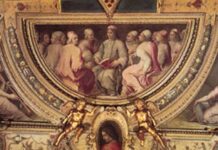
Ebook Info
- Published: 2001
- Number of pages: 404 pages
- Format: PDF
- File Size: 10.62 MB
- Authors: Christopher Hibbert
Description
This beautifully written, informative study is a portrait, a history and a superb guide book, capturing fully the seductive beauty and the many layered past of the Eternal City. It covers 3,000 years of history from the city’s quasi-mythical origins, through the Etruscan kings, the opulent glory of classical Rome, the decadence and decay of the Middle Ages and the beauty and corruption of the Renaissance, to its time at the heart of Mussolini’s fascist Italy. Exploring the city’s streets and buildings, peopled with popes, gladiators, emperors, noblemen and peasants, this volume details the turbulent and dramatic history of Rome in all its depravity and grandeur.
User’s Reviews
Reviews from Amazon users which were colected at the time this book was published on the website:
⭐I thought this was a very good book on the subject. Chapters 1 – 3 describe the Rome of the early Roman Kings, the Republic, and the Empire. The rest of the book (240 or so pages) is pretty much a history of the Papacy. Throughout most of the book a sub-story is the decline of a once great city until the 16th century or so when the Renaissance began.The book discusses the internal political issues of the times between the various contenders: consuls and senators, Popes and assorted kings and Holy Roman Emperors, and the great and powerful Roman families and clans of the periods. There are usually mentions of the building efforts of the rulers: walls, temples, aqueducts, circuses and the coliseum, churches and basilicas, monasteries, and other principal buildings.It was kind of sad to read the decline of the great city after the last emperor Romulus Augustus was deposed by Odoacer in 476 CE ( or AD if you wish). At its height in perhaps the first through third centuries CE the population of the city was probably 800 000 to 1 million. By around 600 CE it had fallen to 50 000. At its nadir in the 10th century it was 35 000 or so. By the middle of the 14th century much of the land inside the old walls had reverted to pasture land and meadows. Cattle, sheep, goats, and wild animals such as deer grazed there. They in turn were preyed upon by wolves living in caves formed by the collapsing buildings, towers, and walls. The Pontine Marches had been drained during the Republic and Empire but had reverted to marshland by the 6th century CE as the drainage system was allowed to collapse and was no longer maintained.By the time of the Sack of Rome in 1527 the population had risen to 60 000; to 80 000 by 1563; to 120 000 by 1621; to 150 000 by 1709; to 167 000 by 1800; to 200 000 by 1870; to 460 000 by 1900; to 1 500 000 by 1940; and to 2 800 000 by 1983.The book also includes detailed chapters on the medieval conflicts between Popes and Holy Roman Emperors, the Sack of Rome of 1527 and its political origins, the reactions of Popes to the Protestant reformation and the ensuing Catholic counter reformation in the 16th century, the conflicts with Napoleon, the unification of Italy in the 1860s and the conflicts between the Italian civil government and the papacy, the seizure of power by Mussolini in 1922, and the disaster of World War II.Given that much of the book discusses the Papacy, I thought it was a little odd that there are almost no discussions on theological doctrine conflicts with the Eastern Orthodox church. For example, there isn’t a word on the Great Schism of 1054. Maybe that is a good thing — I have read a little about some of the issues and I will have to say that the theological hair – splitting can be excruciating to follow. I still can’t figure out the “Filioque” argument. Arianism and Monophysitism leave me cold. On the other hand, there is much discussion on the greed and immorality of many popes. It was quite conventional for popes to have mistresses until maybe the 19th century.Part III “Notes on Topography, Buildings, and Works of Art” is well worth reading. It provides additional detailed information on subjects such as the historic “Seven Hills of Rome,” the names of all the old historic bridges over the Tiber River, the gates of the city, and additional information on renowned structures such as the Pantheon, baths built by assorted emperors, temples, basilica, villas, and roads.There are a few black and white reproductions of paintings, sketches of period city features, and city maps but no color renderings of any famous buildings..An outstanding architectural book on Renaissance Rome is “Palazzi of Rome: Splendor and Pride” (2005) by Cresti, Rendina, and Listri.
⭐Hibbert offers one of the few overall studies on Rome, from the Tarquins to the modern era. The book is necessarily rather shallow, and makes no pretense to original scholarship. But it is informative, easy to read, and visually attractive — its primary virtue is the breadth of its treatment. I use it as a text in my “History of the City of Rome” course (university level), along with monographs on specific periods. I would certainly recommend it as an introduction to a city where the multiple layers of History are still tangible.
⭐This book is best savored slowly, so you can let the information sink in. History books like this tend to be pretty dry, but it does have lots of interesting information in it. I bought it because I wanted to know more about Rome that isn’t “classics”, like the Roman empire. Probably a third of the book is still Roman republic/empire stuff, but then you get to find out what other Romans did when the empire went out the backside of the divine turtle we live on. Rock on, Romans. Eat that spaghetti.
⭐Excellent history of the City of Rome. This is a relatively short book, and it is older, but it still does a nice job of walking through the history of the city in a clear and concise manner. It’s a good read for anyone interested in the entire history of Rome–not just the Ancient Rome or High Renaissance periods.
⭐Beautifully written and illustrated, this is my reading material before an upcoming trip to Rome. A good history of the city without swamping you with too much excessive detail.
⭐Easy to follow, a good blend of what life was like, illustrative text and cold, hard history. Mr Hibbert makes it very interesting, and if you have any interest in the architecture of Rome, you will find plenty in this book to keep your interest.
⭐More than I needed to know but informative and entertaining. I bought this as a primer on Rome before vacationing there. Wish I could have gotten it on my Kindle, then I could have taken it with me for reference when I visited that area.
⭐Christopher Hibbert is a knowledgeable and entertaining writer of history. Having been to Rome many times, I found this book made me appreciate the Eternal City more than ever. Get this if you love Rome or are planning a trip
⭐A comprehensive history but I was very disappointed with some of the so-called facts which I know to be very inaccurate so made me doubt some of the ‘facts’ regarding items of Rome’s history that I am not so familiar with. I previously regarded Christoper Hibbert to be an excellent historian but this book disappointed me in some areas.
⭐Disappointing. I found it a bit boring as most of the first two thirds of the book was virtually a long list of popes, their ‘problems’ and what they had done. The latter part of the book (Napoleon, Garibaldi etc) felt as though it had been abbreviated in order to keep the book at a reasonable size. Sorry, even two stars is being kind.
⭐Very readable account of the crazy city I now call home. To make it more useful, and so as to be able to converse with others about what I’ve read, I’ve written names of people and places in Italian in the margins.
⭐An in depth history of Rome. It was a really informative. One thing that I really joined about this book is that it includes lots of information on the History of Art in relation to Rome. I would recommend this book to anyone who wants to read an interesting historical account of Rome.
⭐This was dull as dishwater, the only good thing was the pictures. It must be hard to make something so fascinating laborious to read
Keywords
Free Download Rome: The Biography of a City in PDF format
Rome: The Biography of a City PDF Free Download
Download Rome: The Biography of a City 2001 PDF Free
Rome: The Biography of a City 2001 PDF Free Download
Download Rome: The Biography of a City PDF
Free Download Ebook Rome: The Biography of a City





